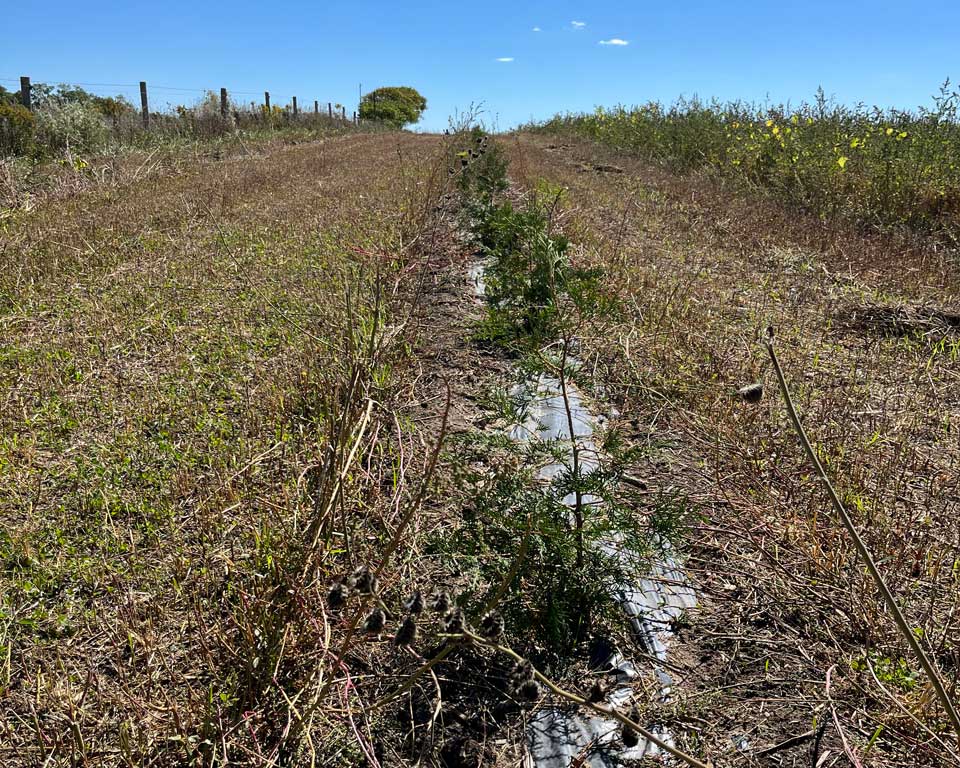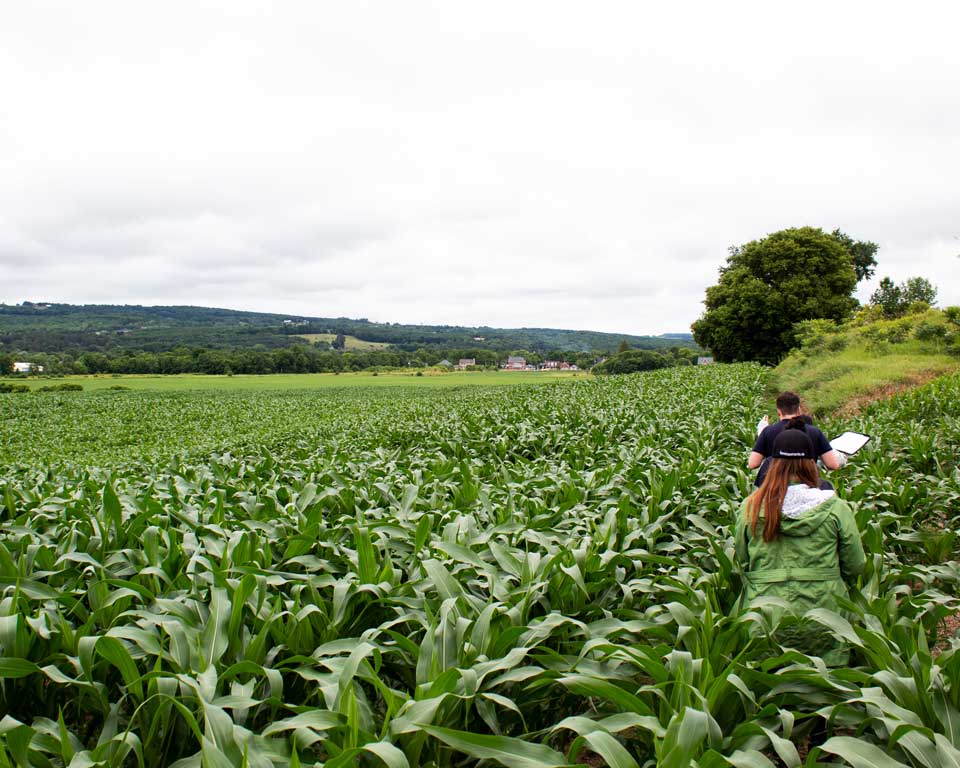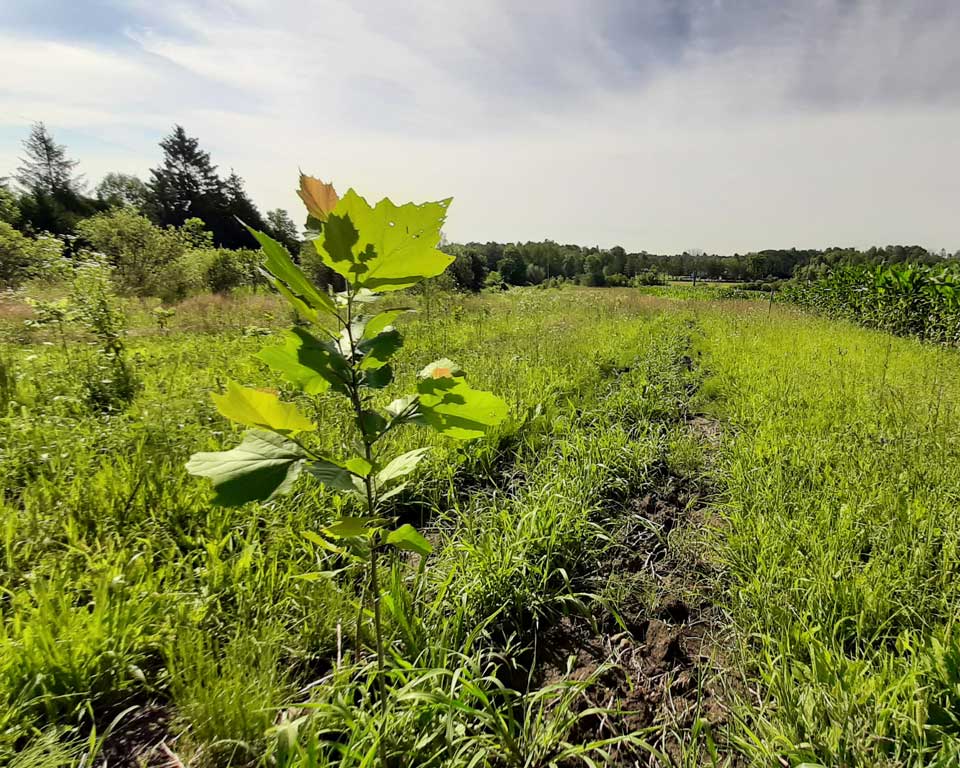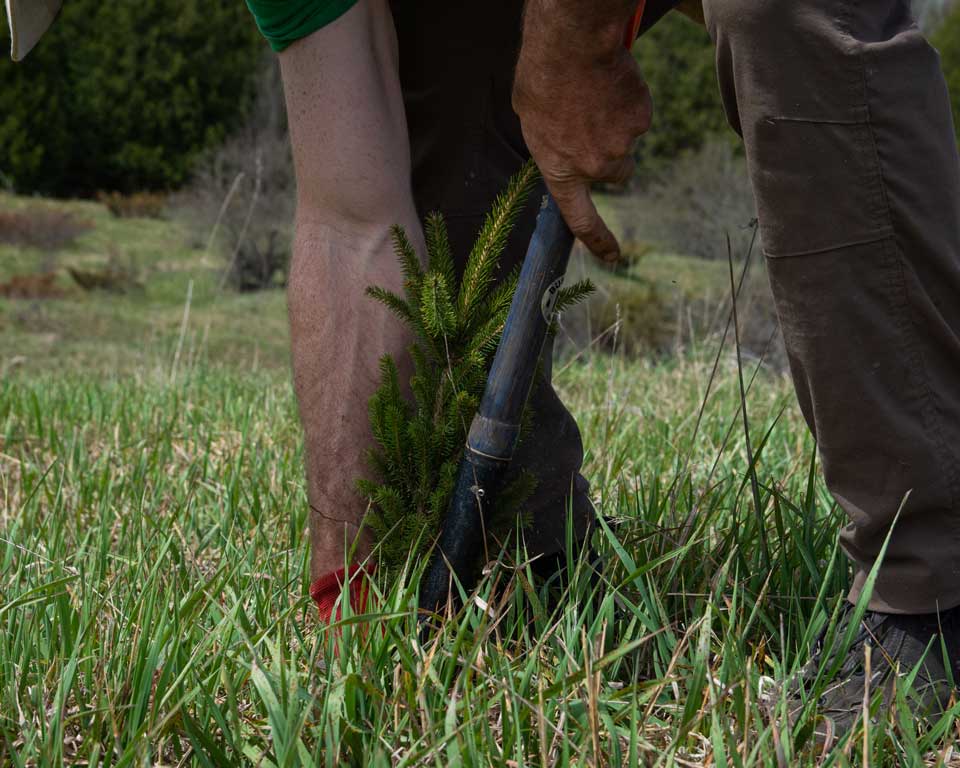Twelve years ago, this third-generation dairy farm transitioned to the organic production of row crops — such as corn, soy, and alfalfa. The landowners of this farm have also implemented several regenerative agriculture practices such as crop rotations, cover cropping, and windbreaks.
In 2022, the owners of the Mossley site decided to incorporate three windbreaks around their fields, in order to protect their crops from extreme weather patterns. One of the windbreaks was composed of one row of Norway Spruce, while the other two windbreaks were composed of two rows: one of Norway Spruce and the other of Eastern White Cedar.
This site was also prepared with thick plastic mulch, which helps to minimize the presence of competitive weeds and retain soil moisture.



